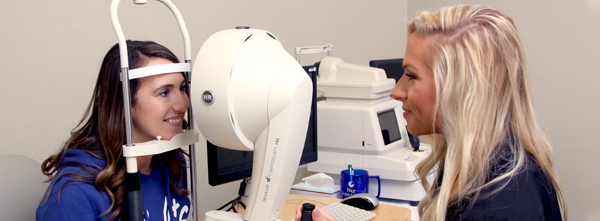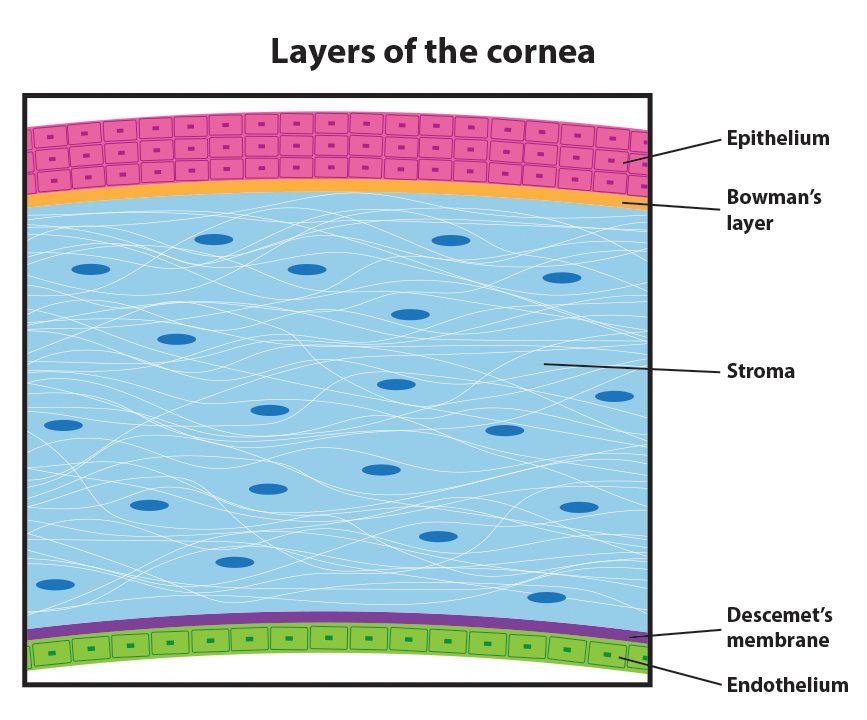
Indianapolis, IN – Dr. Matthew Feng of Price Vision Group will be the first ophthalmologist in Indiana to use the new FDA-approved drug, Oxervate™ (cenegermin). The patient, Tina Hunter, has vision loss due to neurotrophic keratitis (NK). NK is a rare, degenerative corneal disease for which previous treatments include artificial tears or autologous serum tears, which are custom made from a patient’s own blood at a specialized pharmacy. More invasive treatment options are available for difficult cases and include an amniotic membrane graft, having your eye sewn shut, or a nerve transplant.
This landmark drug is the only treatment with complete corneal healing potential in just 8 weeks of eye drop use for NK patients. “It’s exciting to be able to offer these patients a new opportunity for healing, that keeps them out of the operating room, with a simple eye drop treatment. We are continually looking for new and better ways to improve patient outcomes and are hopeful this will help restore the quality of life for many patients,” said Dr. Feng
In Tina’s case, tears alone were not successful and her right eyelid was sewn shut. Tina said, “The eye specialist at another center told me that my eye could never be opened. There was nothing that they can do. I was told I couldn’t drive. My independence was gone. To have that taken away, you don’t know what that means. When I was referred to Price Vision Group, Dr. Feng told me about this new drug and that I’m a prime candidate for it.”
What is neurotrophic keratitis?
Neurotrophic keratitis is diagnosed when the eye loses normal sensation to its cornea, the front clear dome of the eye. Because light must pass through the cornea to enter the eye, vision loss can result when the cornea becomes dry, irregular, or scarred. In severe cases of NK, ulceration and perforation can result. According to Dr. Feng, “most of the corneal nerve damage that I see results from diabetes, shingles, and/or trauma. NK is like a diabetic foot ulcer of the eye and historically has been equally challenging to treat.”
What is Oxervate and how does it treat NK?
Oxervate™ is a topical eye drop containing the active ingredient, cenegermin. It is a human nerve growth factor to stimulate the regeneration of corneal nerves and restoration of corneal sensation. The safety and efficacy of Oxervate™ were established on 151 NK patients in two 8-week, randomized, controlled, multi-center, double-masked studies. In both studies, patients were given the drops six times a day in the affected eyes for 8 weeks. “The data showed that 72% of patients who received Oxervate were actually cured after that 8-week period,” said Dr. Feng, adding, “It’s not often that we can cure a chronic disease.” For Tina, regaining her independence is what she is looking forward to most. “To have better vision and there’s some hope when I didn’t have any before is just awesome.”
The most common adverse reactions in patients taking Oxervate™ are eye pain, ocular hyperemia (enlarged blood vessels in the white of the eyes), eye inflammation, and increased lacrimation (watery eyes).
If you or someone you know might benefit from Oxervate™, please schedule an [consultation]appointment[/consultation] at Price Vision Group, or call us at (317) 844-5530.





 Pioneering cornea surgeon
Pioneering cornea surgeon 

 Indianapolis, IN – Price Vision Group is pleased to announce its participation in the 2nd annual National Sight Week (October 15-21), sponsored by the American Society of Cataract & Refractive Surgery (ASCRS) Foundation.
Indianapolis, IN – Price Vision Group is pleased to announce its participation in the 2nd annual National Sight Week (October 15-21), sponsored by the American Society of Cataract & Refractive Surgery (ASCRS) Foundation.



